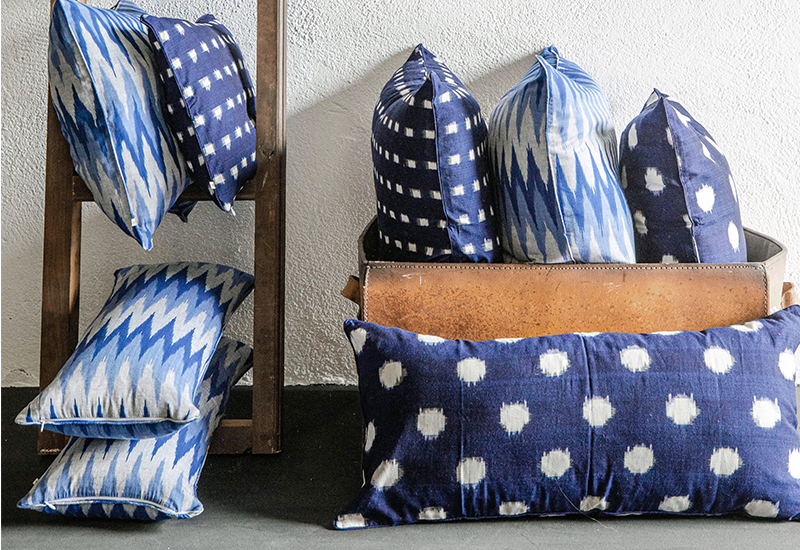As the days get shorter and the nights grow longer, bring a little drama into your home with this midnight-blue hue. Sitting between blue and violet in the rainbow, the colour ‘indigo’ is named after the pigment obtained from plants in the genus Indigofera. One of the oldest dyes known to humankind, It’s an intense colour that will make your living space feel both confident and calming.

Cecília and Nuno at ‘Kozii’ are experts in the art of indigo dyeing. Rather like sourdough bread, the process of growing the organism takes weeks. A vat of indigo dye must be continuously nurtured with indigo powder, slaked lime and molasses fed to the mix daily.
Only when then does it look and feel ready, can dyeing begin.
Their patterns are created by block printing with a paste that prevents the dye from penetrating the fabric and each time the cloth is dipped and exposed to the air, a darker shade of blue is achieved. It’s a labour of love and each length of fabric created is unique. You can buy their home textiles online or visit their shops in Lagos, Olhão and Tavira.

Curl up on this luxurious velvet 3-seater sofa bed from Maisons du Monde, it’s just one of a range of sumptuous seating available from their online shop this season.

Indigo sofa bit.ly/3PwpsgH
The view of the cliffs at Praia da Falésia one Autumn evening inspired this seascape painting – the triptych works really well as a feature on a plain white wall.


This abstract floral wall art was inspired by the deep blue shrubby pimpernel flowers that grow wild across the Algarve. I’ve balanced the indigo tones with blush, cream and peach for a softer feel.

There is a great selection of indigo-glazed ceramic vases at CJ Decor in Lagos that would look great as a centrepiece on a dining table or mantelpiece.

Fancy having your own toponymic plaque made? The one pictured translates as ‘Sunbathed House’. I think mine would have to be ‘Casa de Adolescente Temperamental’! The colour is called ‘Portuguese Blue’ and originates from the cobalt pigments used by Arabic tile makers in the 16th century.

Francisco Cunha is one of a handful of artists who continue the tradition today, painting raw glass using pigments made from 80% glass. When fired in a kiln, the glass melts and transforms into an enduring masterpiece. He also creates wall murals and plaques, so if you want a really unique addition to your home, you could commission him to design something just for you. (You will not find a hand-painted mural of mermaids playing violins in Ikea!)













